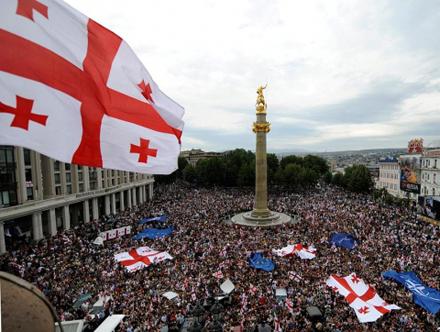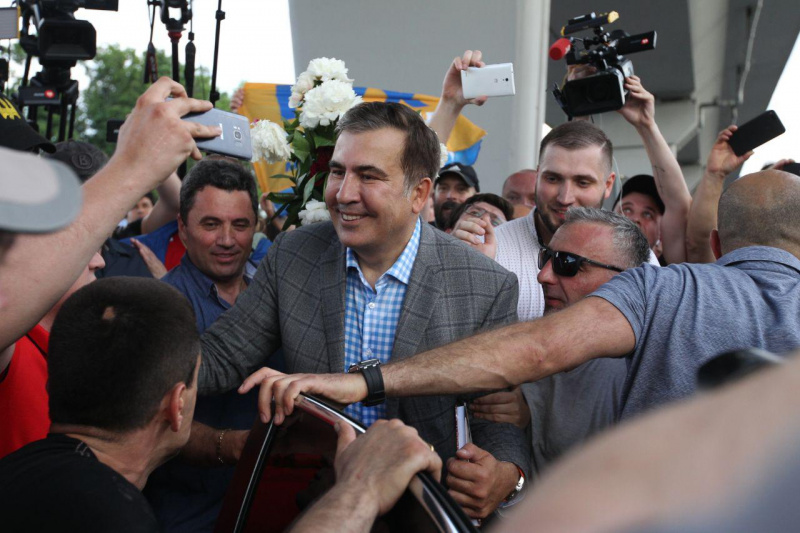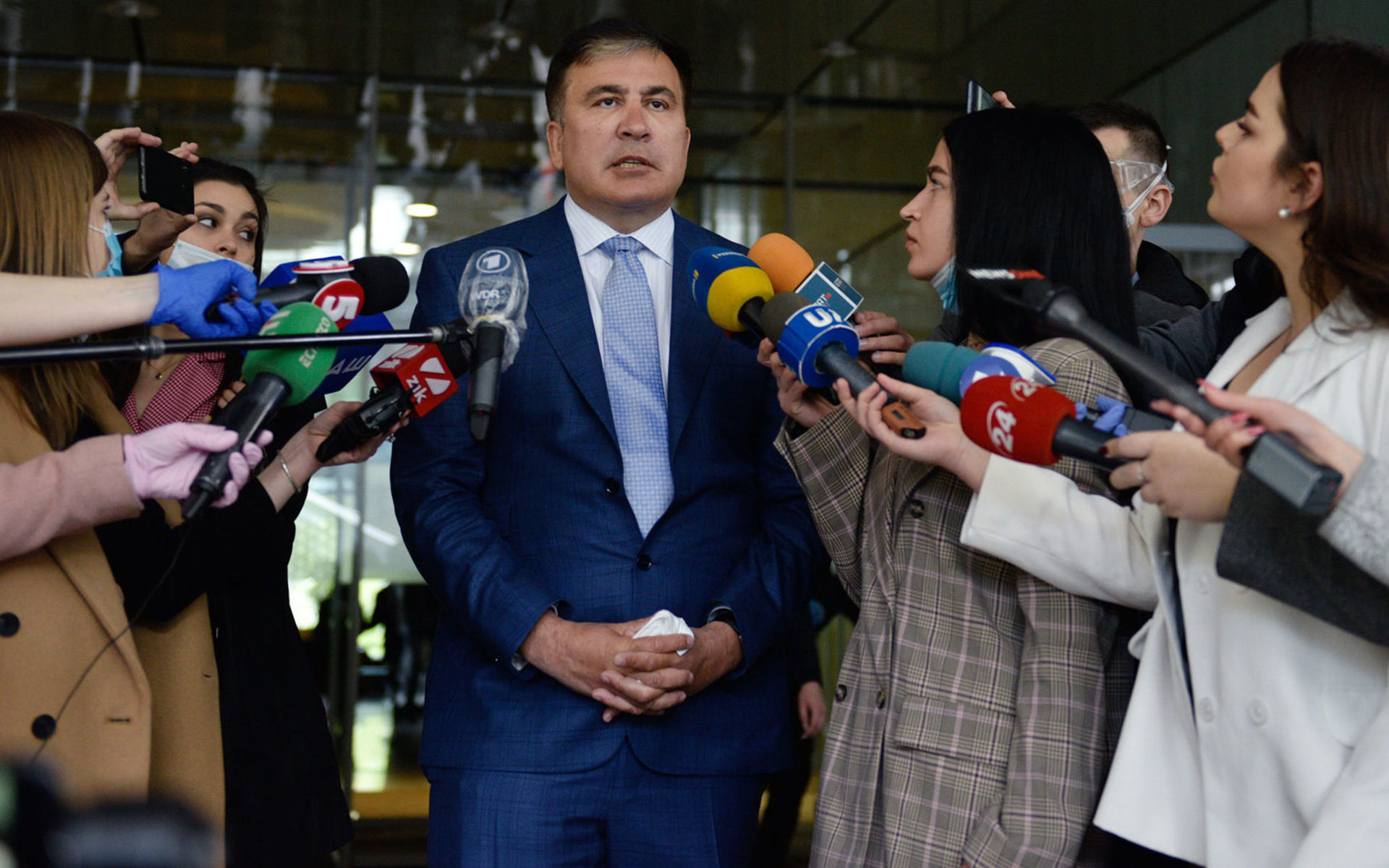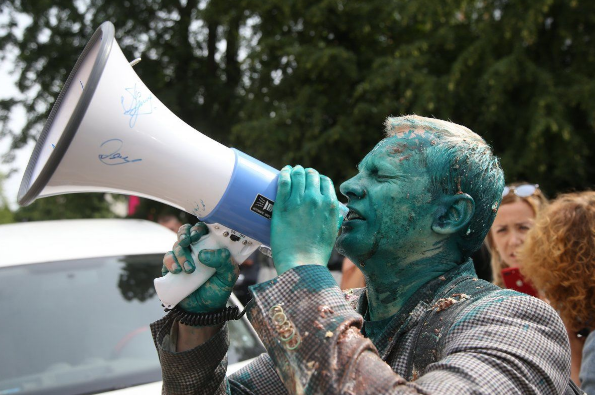Today, President Volodymyr Zelenskyy appointed ex-Georgian President and ex-head of Ukraine's Odesa Oblast State Administration Mikheil Saakashvili as the Head of the Executive Committee of Reforms, part of the National Reform Council. The Council was created in December 2014, and its last meeting took place in the beginning of March 2018. In this period, it held 28 meetings, which mainly served as a discussion platform. Why would Zelenskyy need to reanimate it and why is Saakashvili brought to Ukraine’s agenda again?
Failing becoming Vice Prime Minister of Reforms
On 22 April 2020, Mikheil Saakashvili, former Georgia president, reappeared on Ukraine’s political landscape. That day the information that he was offered the new government position of Vice Prime Minister of Reforms appeared. That same day, President Volodymyr Zelenskyy confirmed that he sees potential in Saakashvili, and the former Georgian president confirmed that he received such an offer and is ready to accept it. The news about the famous Georgian reformer spread far beyond Ukraine. However, within a week, the question of the potential appointment dissipated. As the last week proved, Saakashvili is not perceived in Ukrainian society as positively as he was in 2015. During his previous stint in Ukraine, he made serious enemies among the Ukrainian political elite and oligarchs, which has left him with very few friends and little support.
Notably, one of Saakashvili’s main foes in Ukraine is Minister of Internal Affairs Arsen Avakov. A heated skirmish ensued between the two when Saakashvili accused the Ukrainian Cabinet and Avakov personally of chairing corruption in the country during one of the meetings of the abovementioned National Reforms Council. Avakov threw a glass of water at him in response.
The proposal to reinstate Saakashvili on Ukraine’s political stage was likely targeted at the country’s Western partners. This is not the first time the Ukrainian government has tried to utilize Saakashvili’s image as a reformer.
How Sakkashvili’s image was used in Poroshenko’s time
When Saakashvili came to power in Georgia, after the Rose Revolution of 2003, he initiated drastic reforms. The Rose Revolution was a pro-Western peaceful change of power in Georgia in November 2003. The revolution was caused by widespread protests over the disputed parliamentary elections and culminated in the ousting of President Eduard Shevardnadze, which marked the end of the Soviet era of leadership in the country. The event derives its name from the climactic moment, when demonstrators led by Mikheil Saakashvili, who was later sworn in as president, stormed the Parliament session with red roses in hand.
The Rose Revolution was a pro-Western peaceful change of power in Georgia in November 2003. The revolution was caused by widespread protests over the disputed parliamentary elections and culminated in the ousting of President Eduard Shevardnadze, which marked the end of the Soviet era of leadership in the country. The event derives its name from the climactic moment, when demonstrators led by Mikheil Saakashvili, who was later sworn in as president, stormed the Parliament session with red roses in hand.
And here is where Ukraine stepped in. After the Euromaidan Revolution in 2014, the country lacked timely reforms. Major transformations in various areas of public office were announced, but the results lagged - real change needs time.


- Poroshenko strips “old buddy” Saakashvili of citizenship; Ukraine returning to selective justice
- Saakashvili enters Ukraine after fans storm border crossing


Zelenskyy repeating Poroshenko’s path with Saakashvili
Saakashvili got his lucky chance to return to Ukraine when Zelenskyy was elected. The ex-comedian-now-president used his new-found decree to fix the situation, and Saakashvili was allowed to return at the end of May 2019.
“It’s true there are more problems. They are catastrophic. They appear, I’m sorry to say, like pimples on an 18-year-old kid. You don’t know where they will pop up, or when,” the president said.Today, Ukraine faces many challenges. Apart from those the country has struggled with for years; such as the de facto war with Russia and Russian-occupied Crimea, pervasive corruption, the urgent need for reforms, and the overwhelming opposition of the old guard, the country - like the rest of the world - now has yet one more problem to deal with… an invisible one ... COVID-19. In times when results are demanded on every front, but can not be achieved anywhere, all that is left is to create the image of one. Perhaps one worthy of Health Minister Zoriana Skaletska. Her much-publicized trip to Sanzhary - ostensibly to stop panic over the coronavirus - was sympathetically framed as bravely supporting 100 people in quarantine. But others called it for what it was - a PR stunt. During the last two months, Ukraine reshuffled the Cabinet twice. On 13 April 2020, Parliament adopted a revised Budget 2020, responding to the economic crisis caused by the pandemic. As Euromaidan Press reported in April, the amended budget has raised the deficit threefold to UAH 0.3 trillion ($11 billion). This huge deficit is expected to be covered by a hefty loan from the IMF. In such circumstances, international support is crucial for Zelenskyy’s government. Commenting on his possible appointment, Saakashvili earlier stated that Zelenskyy expected him to deal with negotiations with the IMF. Could the image of a “Reformer” be the solution? Read also:
- Saakashvili in Ukraine: revolutionary, Kremlin agent, or Poroshenko’s project?
- Poroshenko’s conflict with Saakashvili jeopardizes Ukraine
- Poroshenko strips “old buddy” Saakashvili of citizenship; Ukraine returning to selective justice
- The meaning of the conflict in Ukraine’s government
- Why Saakashvili left
- Ukraine deports Georgian ex-President Saakashvili to Poland
- Prosecutor General accuses Saakashvili in cooperating with pro-Russian oligarch, latter calls for protests
- Saakashvili enters Ukraine after fans storm border crossing
- Saakashvili: Ukraine is my home, I want to go back home
- Saakashvili needs to respect the country that gave him shelter


![Anti-corruption steps of Ukraine's new parliament endorsed by activists [fight corruption]](https://euromaidanpress.com/wp-content/uploads/2019/10/антикор2019-1.jpg)


